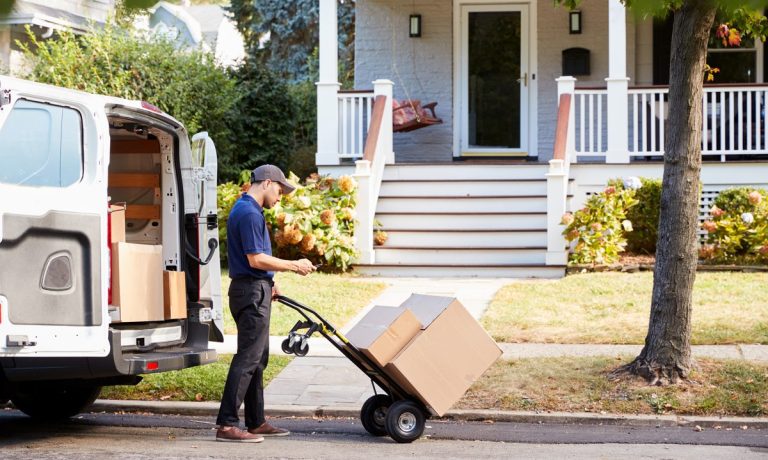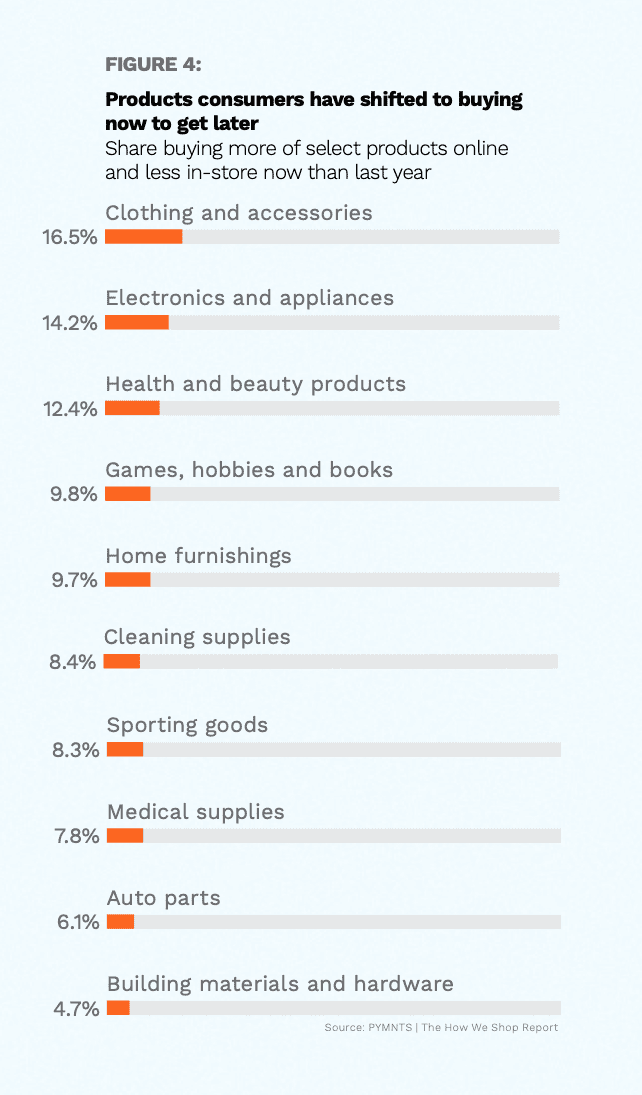
As physical and digital shopping worlds collide, consumers are increasingly making decisions about whether to shop in-store or online based not on product availability but rather what their schedule allows and when they need an item.
“Instead of running to the store … we are more willing to put our everyday purchases away from instant gratification and more toward a planned spending scenario,” Chris Abele, vice president of product strategy at Fiserv, told PYMNTS in a recent interview.
The shift, he said, comes from consumers’ “18 months of being trained by the COVID environment” to think ahead about household staples such as toothpaste and cosmetics. “They’re more used to not having the option to go to a store and needing to plan ahead when it comes to those types of things,” he added.
PYMNTS research, conducted in collaboration with Carat from Fiserv, found that 50% of all consumers have increased their “buy now, get later” (BNGL) shopping behaviors in the past year, opting to shop online and have their purchases delivered. Clothing and accessories have seen the biggest shift, with 17% of all consumers buying more of their apparel via BNGL than they did last year.

See: 5,000 ‘Need It Now’ Consumers Tell PYMNTS What They Expect, Value Most From Retailers
But BNGL goes beyond everyday items. Abele said in his own life, he recently purchased several seasonal Halloween items and candies online, something he typically does in-store, because “it was just a matter of a little bit broader selection.”
“We’ve gotten used to the idea that there is a good selection online and yes, we can get what we need in time,” Abele said.
Driven by Digital Wallets
Still, 41% of consumers say they’re making more buy now, get now purchases than before the pandemic — though retailers could be doing more to bring those customers in, such as expanding curbside pickup availability or increasing payment options.
Consumers are craving the same frictionless digital payment experiences they get online when they walk into a store, Abele said, wherein they walk up, are recognized by the merchant and check out in a matter of moments.
“Now, the reality of actually making that happen, we’re still quite a ways away from, but wallets are the simple way of doing that,” Abele said. Nearly one-third of millennials and bridge millennials say they’d be more likely to make brick-and-mortar purchases if they could use a digital wallet.
Some more advanced merchants, Abele noted, are taking steps to allow payments through QR codes, and many retailers have already adopted NFC-supported terminal devices to enable digital wallet payments. In the past 18 months, Fiserv has seen in-store digital wallet usage quadruple, Abele said, moving to almost 10% adoption in some verticals.
PYMNTS data show 41% of consumers increasing their BNGN purchases pay via digital wallets, while 8.7% use buy now, pay later (BNPL) options. And 58% of BNGL shoppers also say they regularly pay for purchases via digital wallet, and 11% use BNPL options.
Related: ‘Buy Now, Get Now’ and ‘Buy Now, Get Later’ Add New Dimensions to Bring-It-To-Me Economy
“It’s a good reminder for merchants that they need to think about making changes to their point of sale or their environments to support these new payment types,” Abele said.
He added that it’s important to recognize that use of BNPL isn’t restricted to younger consumers or lower income brackets — in fact, 22% of BNGN shoppers making more than $100,000 annually say BNPL options would encourage them to shop at physical stores.
“It has pretty widespread demand, and we expect it’ll continue to take shape and grab hold in the retail sector,” Abele said.
Abele also noted that debit cards have become increasingly popular for both BNGN and BNGL shoppers, something that is reflected in both PYMNTS research and Fiserv’s experience over the last 18 months. Over 57% of consumers who increased their BNGL purchases over the past year paid using a debit card, compared to 70% who used a credit card; and 70% of BNGN shoppers used a debit card, compared to 65% who used a credit card.
Part of the rise, Abele said, comes from younger shoppers who are more accustomed to debit cards “taking up more of the spend,” while bridge millennials and Generation X have simultaneously moved toward debit spending as a whole.
“So, what was a segment that was dominated by credit cards has now moved toward debit cards … and all the reasons for that seem to point back toward demographics,” he said.
Accelerated by the Labor Shortage
The biggest problem for retailers right now, Abele said, is finding enough workers to fill open positions, and while some “basic steps” are being taken to alleviate the pain, the situation is likely accelerating merchants’ digital adoption.
“Anything that drives store productivity, anything that drives efficiency for the consumer, anything that effectively just makes things a digital experience is really going to be driven faster by the fact there’s such as strong labor shortage,” Abele said. He added that the shortage is likely not going to let up for “at least another six to 12 months.”
To cope, some warehouses and logistics operators have begun using robots to ease the workload in lieu of human employees, for example, while Target has said it will hire fewer seasonal workers this holiday season and instead offer current employees more hours through a mobile scheduling app.
Read more: Retailers Lean on Employees to Do More Amid Labor Shortage
“Merchants are going to rapidly move toward new types of experiences now because they simply don’t have another choice,” Abele said. “They can’t hire enough people.”